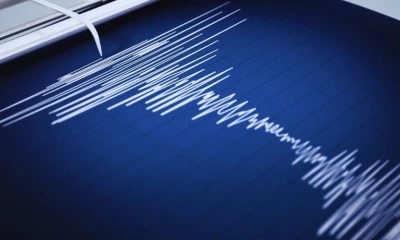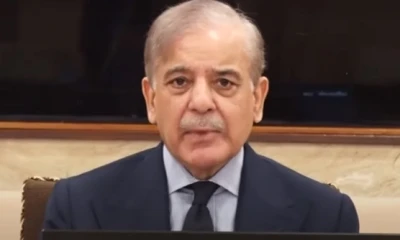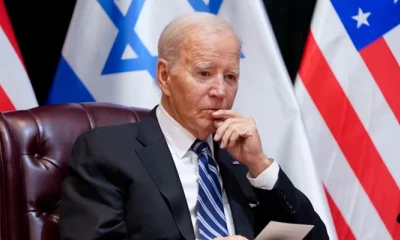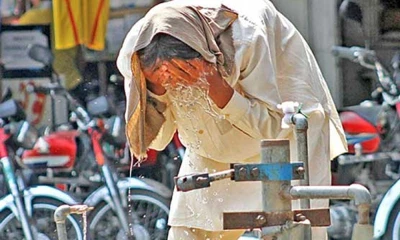-


Senator Aimal Wali Khan Got Important Designation | Breaking News | GNN
-


CM Punjab Maryam Nawaz Important Meeting | Breaking News | GNN
-


Ex-Food Minister Big Revelation Over Wheat Scandal | Breaking News | GNN
-


Pakistan Inflation Rate Increased | People Worried Over Current Situation Of Economy | Breaking News
Regional
A rare burst of billions of cicadas will rewire our ecosystems for years to come
From Chicago to South Carolina, swarms of noisy periodical cicadas will rewire forest food webs.
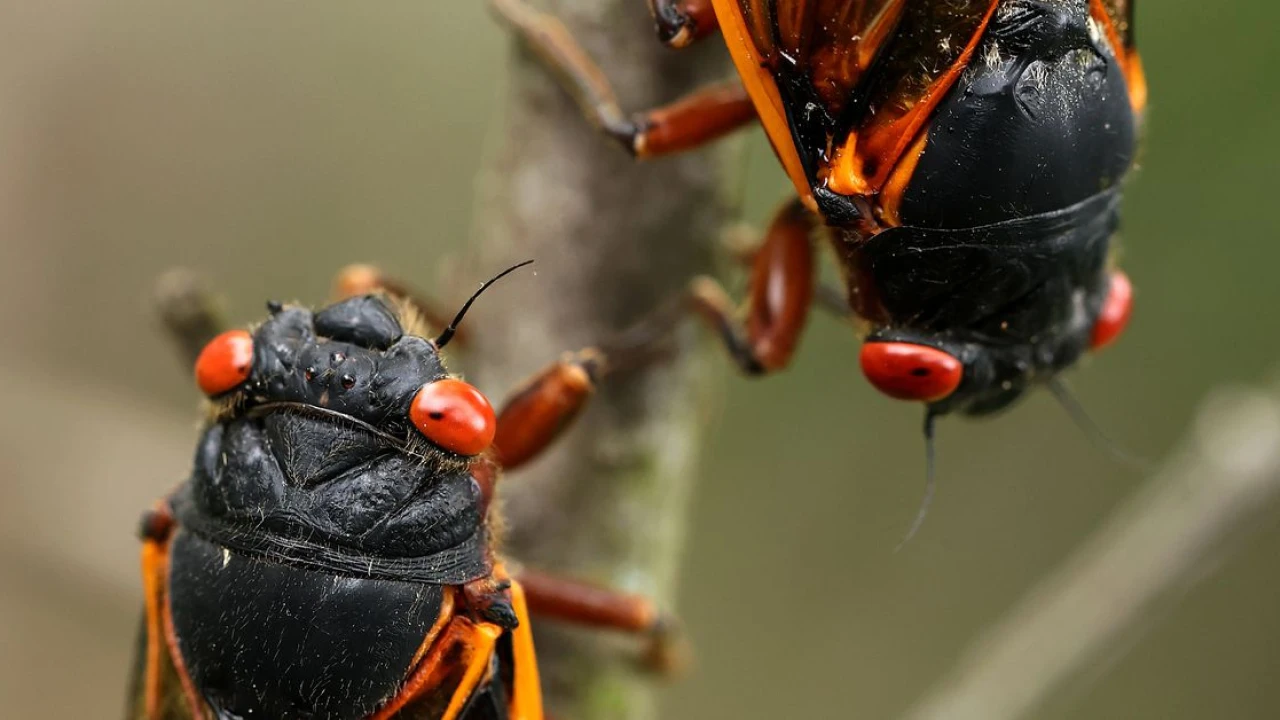
This spring is a very good time to be a bird.
In forests across the Midwest and Southeast, the ground is about to erupt with billions of loud, protein-packed cicadas. They’ll buzz about for a few weeks as they search for mates, providing snacks for pretty much every living creature in the forest, from songbirds and swans to frogs and even fish.
This is an especially big year for these red-eyed bugs: Brood XIX and Brood XIII — which pop up every 13 years and 17 years, respectively — are emerging at once. The last time such an event happened was the spring of 1803, when Thomas Jefferson was president. It will be hundreds of years before it happens again.
While the insect explosion will be brief, it will shape forests for years to come. The binge-fest that birds enjoy during these periods supersize their families and, in turn, shift the eating and hunting patterns of many other species. These effects send ripples throughout the ecosystem. As one recent study put it, pulses of periodical cicadas can “rewire” entire forest food webs. Call it the butterfly cicada effect.
Why billions of cicadas erupt all at once
For most of their lives — either 13 or 17 years, depending on the brood — periodical cicadas live several inches underground, slurping up sap from plant roots with their straw-like mouths. Then, when the soil temperature hits about 64 degrees Fahrenheit, they emerge, typically after sunset. Cicadas in more southern states, like Alabama, usually emerge in April or early May, whereas those in colder states like Illinois tend to appear later in the spring.
The teenage insects then march up plants, trees, and fences, where they metamorphose into winged adults. That’s when giant groups of males start singing loudly to attract females (you know, lady bugs). During these events, a single acre of land can have more than 1 million cicadas on it. That’s roughly 2,700 pounds of bugs.
:no_upscale()/cdn.vox-cdn.com/uploads/chorus_asset/file/25432087/GettyImages_2150500394.jpg)
:no_upscale()/cdn.vox-cdn.com/uploads/chorus_asset/file/25432091/GettyImages_2150469251.jpg)
This mass eruption, scientists believe, is strategic. “They effectively satiate their predators,” Louie Yang, an entomologist at the University of California Davis, told me a few years ago, when the famous Brood X emerged.
The cicada defense strategy is to flood the forests so that predators become so full they literally can’t stomach another bite. That leaves plenty of insects left to mate and lay eggs that will become the next generation of cicadas.
This approach seems to work for cicadas, and it’s an absolute delight for birds.
Birds lose their minds during cicada outbreaks
Birds can be fussy about their food. Some prefer plants, like the trumpeter swan, while others specialize in seeds or small insects, like chickadees.
Those preferences get tossed out during cicada explosions. The birds stop what they’re doing and go to town on the bug buffet. During the Brood X emergence in 2021, researchers documented more than 80 different avian species feeding on cicadas, including small birds that couldn’t fit them in their mouths.
:no_upscale()/cdn.vox-cdn.com/uploads/chorus_asset/file/25432103/Grackle_eating_a_cicadaIMG10284_ByDan.jpg)
“We saw chickadees — tiny, tiny little birds — grab the cicada and drag it to the ground with their body weight and then peck it apart,” said Zoe Getman-Pickering, an ecologist at University of Massachusetts Amherst, who led the research.
She also saw purple martins, which typically catch small insects like winged ants and flies from the air, go after loads of cicadas. “There was one family of purple martins that got 23 cicadas into their nest in three hours or so,” Getman-Pickering said.
This feeding frenzy can seriously benefit some birds. Simply put, more food can lead to more babies.
“Following emergences, you do tend to get an increase in a lot of the apparent avian predator populations,” Walt Koenig, an ornithologist at Cornell University and research zoologist emeritus at UC Berkeley, told me in 2021.
One analysis he co-authored, based on 37 years of data, linked cicada eruptions to a population bump in a number of species including red-headed woodpeckers and common grackles.
Remarkably, many of these knock-on effects lasted for years, Koenig said. The number of blue jays, for example, was significantly higher even three years after the cicada eruptions.
“These results indicate that, at least in some species, the effects of cicada emergences are detectable years after the event itself,” Koenig and his co-authors wrote.
Fat caterpillars, rejoice
It’s not just birds that are benefitting. During big emergences, avian predators are eating so many cicadas that they eat much less of everything else — including caterpillars. That means caterpillars get a rare reprieve from the constant threat of attack, at least from birds.
Researchers have actually measured this. In the years surrounding Brood X, Getman-Pickering and her collaborators filled forests in Maryland with fake caterpillars made of clay. They then measured how many of them had signs of bird strikes — beak marks indicating that birds tried to eat them.
:no_upscale()/cdn.vox-cdn.com/uploads/chorus_asset/file/25432098/Copy_of_clay_caterpillar_with_bird_beak_marks_IMG_4269_ByMartha.png)
In May, when Brood X was emerging, the portion of caterpillars with strike marks fell dramatically, from about 30 percent in a typical year to below 10 percent during the emergence, according to her study, published in 2023.
She also looked at real caterpillars. Remarkably, the number of them roughly doubled in the forests she studied during the emergence, relative to the two following years. “It was pretty staggering how many caterpillars that we saw,” Getman-Pickering said.
A lot of them were extra plump, too, like the spiny larvae of the dagger moth. When there are few cicadas, the juiciest caterpillars are often picked off first; they’re much easier for birds to spot. But during cicada eruptions, caterpillars are free to eat and grow at their leisure.
“The biggest, most visible caterpillars benefited immensely from the release from predation,” she said.
:no_upscale()/cdn.vox-cdn.com/uploads/chorus_asset/file/25432100/Acronicta_caterpillar_on_oak__by_John.JPG)
Trees might prefer life without cicadas
A surge in caterpillars, meanwhile, has effects of its own. These animals famously eat leaves. So when birds eat fewer of them, the caterpillars chew their way through more of the forest canopy.
Getman-Pickering’s recent study measured this too: In the summer of 2021, after Brood X debuted, oak trees experienced “a spike in cumulative leaf damage,” the paper states. A doubling of the number of caterpillars meant a doubling of the damage, she said.
It’s not clear what that ultimately means for forest health. Previous studies have shown that cicadas themselves, however, can harm trees. After breeding, females carve slits into branches and lay eggs, which often damages the wood.
Research by Koenig, of Cornell, found that oak trees produced fewer acorns in a year with a cicada emergence, and in the following year. Older studies have also shown that emergences can slow the rate of tree growth.
The long-term picture is hazier. Unpublished data from Karin Berghardt and Kelsey McGurrin, researchers at the University of Maryland, shows that trees seem to bounce back from the harm caused by egg-laying. There’s also some research suggesting that cicada carcasses could actually fertilize the forest floor.
Ultimately, what all of these studies show is that cicadas can transform entire ecosystems in just a few short weeks. Think about that the next time you walk through the woods: The birds, the butterflies, the trees themselves are all shaped, in some way, by one very weird bug.
Regional
Eurovision is supposed to be fun and silly. This year is different.
Eurovision doesn’t want to be about Israel-Palestine, but amid protests and boycotts, it might not have a choice.
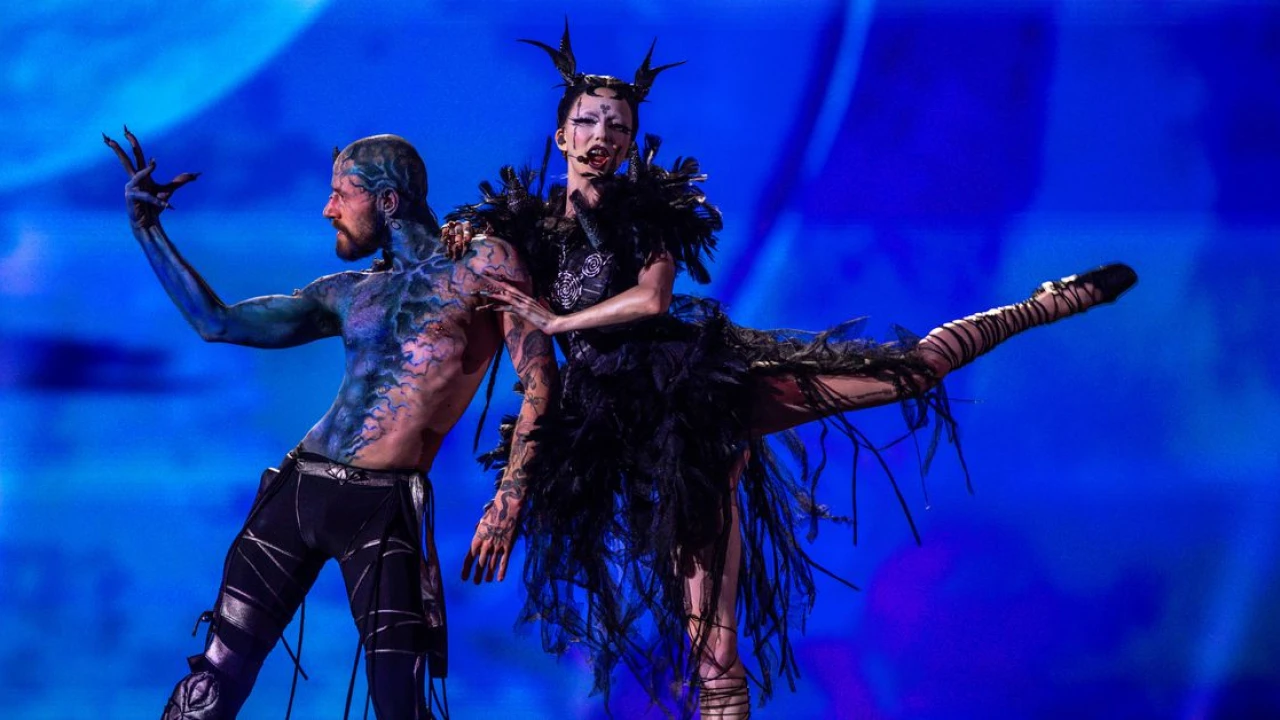
For taxonomic purposes, Eurovision is an international song contest. Technically, the European Broadcast Union (EBU) created the event in 1956 to foster post-WWII European unity, but has largely expanded beyond that function and Europe itself, with countries like Australia and Israel participating. The closest reference point for people in the US is American Idol, the extremely popular reality television singing contest that once crowned national treasure Kelly Clarkson.
Think: polarizing and sometimes very disparate musical acts from each represented country, a public vote, and a night of live performances, but with the added elements like spooky Austrian comedy and whispers of a rigged vote for Sweden.
Is there any better way to symbolically present peace than getting in costume and singing a silly pop song in a lighthearted musical competition? What if I told you that there is no prize money for the winning country’s band — only bragging rights, a trophy, and national hosting duties for the next Eurovision?
There is absolutely nothing like Eurovision.
With nothing and seemingly everything on the line, Eurovision has become an international spectacle, perhaps the international spectacle aside from the Olympics. It’s a fantasy that both undergirds and undermines everything you think you know about Europe and pop music. But as we gear up for another chapter of ostentatious music acts sing-fighting for zero money, the biggest story heading into this week’s (May 7 to May 11) contest in Malmo, Sweden, threatens that escapist reputation. Protests over Israel’s participation have punctuated the lead-up to the event, with activists asserting that Israel should be barred, given its military assault in Gaza, which has killed tens of thousands.
It’s far from the first time that politics and war have made their mark on the proceedings, but now Eurovision faces a huge question over its existence, its history, and who is and isn’t allowed to take part in a competition that’s supposed to really be about European novelty.
Eurovision can’t be replicated
Eurovision usually bends toward more conventional, meaningful winners like last year’s Loreen (who has won twice), 2016’s Jamala, and 2021’s Måneskin. ABBA and Celine Dion have also won the competition, and are its most famous alums. This year the UK’s Olly Alexander, from the successful pop band Years & Years, seems like a ringer.
But the winners only tell part of Eurovision’s story. Eurovision can feel vaguely psychedelic, which is what makes it a joy to behold. And the contest is at its best when it leans into unmitigated absurdity and the unexpected.
Take, for example, Austria’s 2023 entry: “Who the Hell is Edgar?” by Teya & Salena. The female duo met on Starmania, a talent show in their native country, and wrote “Who The Hell is Edgar?” to address “an industry that all too often doesn’t give women enough credit for their hard work and expertise,” according to the official Eurovision website.
So how did Teya and Salena use their talents to discuss an industry that overlooks the female experience?
“Who the Hell is Edgar?” is about Teya and Salena being possessed by the ghost of Edgar Allan Poe. Yes, that Edgar Allan Poe. Instead of writing another short story like “The Tell-Tale Heart” or “The Raven,” Poe has commandeered their bodies to write a fantastic pop song that they believe will make them rich and famous. At one point in the tune, a spooky pop polka, the two wish that they could wrangle Shakespeare and get him to ghostwrite an even bigger hit. But alas, because it’s so hard to make money in the music business — they sing that they can only make “$0.003” per listen — not even these famous ghosts could make the women stars.
Pop music today doesn’t usually make room for the kind of camp storytelling that characterizes “Who the hell is Edgar?” but it works in Eurovision. There, weirdness and cheekiness is celebrated. This is, after all, a competition that has had entries like DJ BoBo’s “Vampires Are Alive” (Switzerland) and Verka Serduchka’s “Dancing Lasha Tumbai” (Ukraine), a techno-inflected pop-folk number where the performers looked like someone zapped The Wizard of Oz’s Tin Man with a Liberace laser beam:
How Eurovision winners are crowned
As my colleague Zack Beauchamp has previously detailed, voting is split between a popular call-in vote from the public and a jury that consists of music industry professionals from each participating country. Thirty-seven participants will compete in semifinal rounds — beginning on May 7 — in hopes of qualifying for one of the 26 total spots in the grand final on May 11.
Jury voting is like Olympic judging, with each country giving out a maximum of 12 points (and all the way down to one) to the twelve best of the night in the grand finale.
Sometimes, the jury vote — the vote from music professionals — doesn’t exactly coincide with the televote. Last year, the judges picked Loreen from Sweden’s “Tattoo”, while the public selected Käärijä from Finland’s “Cha Cha Cha” as the best of the night. The jury placed Finland fourth, which spawned a conspiracy theory about rigging Sweden’s win so the country could host in 2024, the 50th anniversary of when ABBA won.
The low-ish stakes make for a fun bit of drama, but the disconnect between the jury and the popular vote has led to questions about why the jury votes have as much sway as the millions of calls coming through. Perhaps they shouldn’t; the winner would likely be a little more out of the box if the more conventional jury votes didn’t carry equal weight.
Sweden’s alleged rigging is also not unlike some previous bits of Eurovision history, like the time Switzerland picked noted Canadian Celine Dion to represent the famously neutral country in 1988. Rules at the time did not specify that a singer had to be born in the country they represented, and Dion was a burgeoning star internationally. Dion, of course, won the whole thing.
That said, while Eurovision is a “competition” and a winner is crowned, megastars like ABBA and Dion are exceptional exceptions of Eurovision victors. Eurovision winners don’t usually become worldwide superstars. The list of winners — 1982’s Nicole? 2002’s Marie N? 2006’s Lordi — are probably blue Wikipedia links for normies. That should underscore the idea that Eurovision is really about the entertainment of the night, the stunts, the scintillating swing for the fences, rather than the actual score.
Can Eurovision still be fun this year if the biggest story about Eurovision is Israel-Palestine?
Ahead of the competition in Malmo, the lead-up to Eurovision this year has been a series of protests and proposed boycotts against Israel’s participation in this year’s competition. The gist: Israel should not be allowed to participate in Eurovision because of its continued attacks in Gaza. A country at war shouldn’t perform at an event about unity and peace.
The opposition to Israel’s inclusion — Israel has participated in Eurovision since 1973 — isn’t without precedent. Critics of Israel’s participation point out that just two years ago, Eurovision disallowed Russia in a similar situation.
:no_upscale()/cdn.vox-cdn.com/uploads/chorus_asset/file/25437087/2151065534.jpg)
On February 25, 2022, Eurovision banned Russia a day after its invasion of Ukraine. At the time state broadcasters from participating countries like Iceland, Finland, Norway, and The Netherlands called for Russia’s ban, which the EBU ultimately granted, citing Eurovision’s mission to protect “the values of a cultural competition which promotes international exchange and understanding” and saying that the event “unites Europe on one stage.”
Speaking on the ban, Eurovision’s executive supervisor Martin Österdahl said that Russia’s exclusion was a decision about upholding the core values of democracy and human rights core to the event’s spirit. “When we say we are not political, what we always should stand up for are the basic and ultimate values of democracy. Everyone is right to be who they are,” he said in December 2022.
Since then, Russia has suspended its EBU membership and has not returned to the competition.
Earlier this year, more than 1,000 Swedish artists called for Israel’s ban. Similarly, Finnish and Icelandic musicians have also called on Eurovision to block Israel’s entry, stating that by allowing their participation “a country that commits war crimes and continues a military occupation is given a public stage to polish its image in the name of music.” Fans are also making pleas to Eurovision participants not to compete this year because of Israel’s participation, and Sweden has ramped up security in anticipation of protests.
Yet, the ongoing protests and calls for action haven’t convinced the EBU or Eurovision organizers. A young singer named Eden Golan will represent Israel and sing “Hurricane.” The song’s original rejected title was “October Rain,” a not-so-veiled reference to the October 7 Hamas attacks. EBU officials rejected the title and asked Israel to alter the song before re-entry.
“I think it’s important for Israel to appear in Eurovision, and this is also a statement because there are haters who try to drive us off every stage,” Israel’s president, Isaac Herzog, said in February. Before altering its lyrics, Israel had threatened to withdraw from the competition.
According to EBU Director General Noel Curran, Eurovision is a competition between international broadcasters and not the countries themselves. “It is not a contest between governments,” he said, adding that though the EBU and Eurovision made a decision on Russia, it was not going to do so for Israel.
“Comparisons between wars and conflicts are complex and difficult and, as a non-political media organization, not ours to make,” he said.
While Curran insists that the contest will be apolitical, its actions might not be interpreted as such. Palestinian flags will not be allowed at the competition nor will any pro-Palestinian symbols or signs referring to Israel and Hamas’s war. The Israeli flag will be allowed because it’s a member state and only participants’ flags are permitted, with the exception being rainbow and LGBTQ flags.
During the first semifinal on Tuesday, Swedish guest performer Eric Saade wore a keffiyeh — a Palestinian and Arab symbol — on his wrist during his live performance. Saade is of Palestinian descent. Organizers reprimanded Saade, stating: “The Eurovision Song Contest is a live TV show. All performers are made aware of the rules of the Contest, and we regret that Eric Saade chose to compromise the non-political nature of the event.”
Saade responded, telling Swedish network STV that the ban on Palestinian flags and symbols like the keffiyeh is racist:
I got that scarf from my dad as a little boy, to never forget where the family comes from. I didn’t know then that it one day would be called a ‘political symbol’. That’s like calling the Dala horse a political symbol. To my eyes, it’s nothing but racism. I just wanted to be inclusive and carry something that’s real to me – but EBU seems to think that my ethnicity is controversial. That says nothing about me, but everything about them. I repeat this year’s Eurovision Song Contest slogan: United by music.
The rules of what’s allowed to be shown and who’s allowed to support whom make for a jumbled message. Obviously no one expected Eurovision to solve the crisis in the Middle East. But in an attempt to appear apolitical and actively not reference the bloodshed, Eurovision organizers have made their decisions difficult to ignore and this event even harder to enjoy.
Update May 8, 11: 53 am: This piece was originally published on May 7 and has been updated with EBU’s reprimand of Swedish guest performer Eric Saade’s for wearing a keffiyeh.
Crime
ANF recovers 125kg drugs in nine operations
Cases under the Anti-Narcotics Act have been registered against the arrested accused
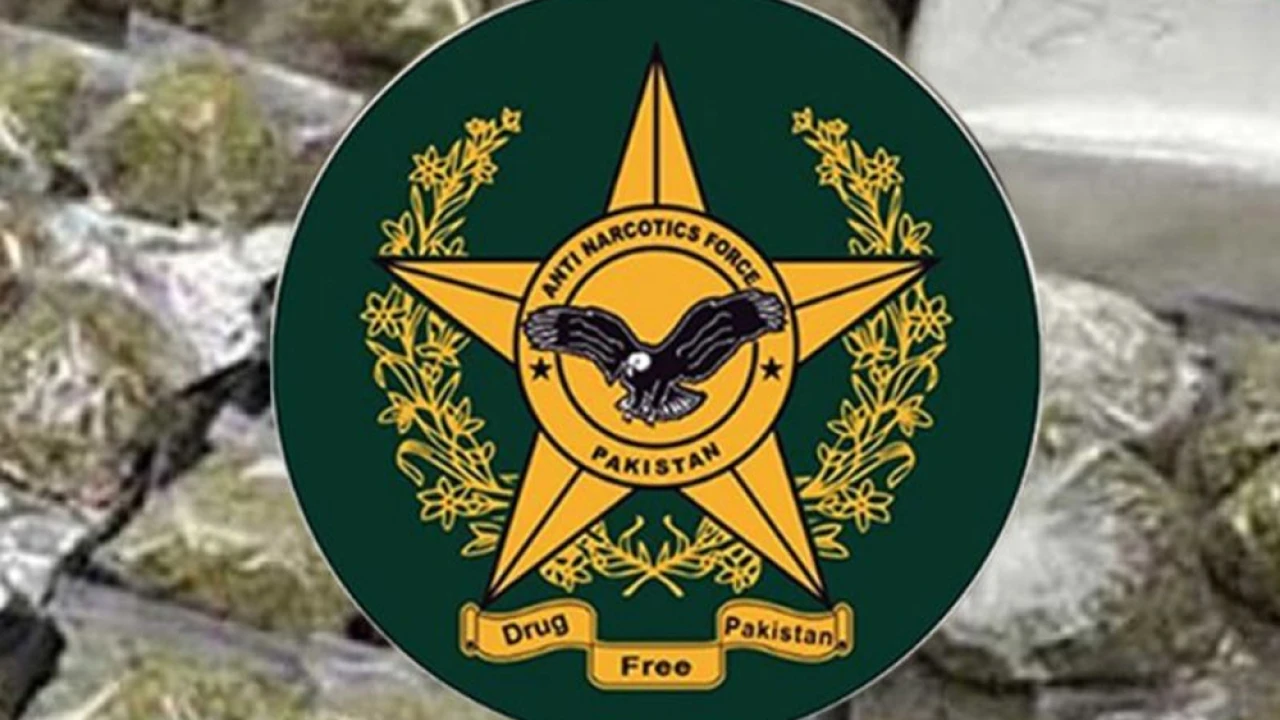
Rawalpindi: The Anti-Narcotics Force (ANF) while conducting nine operations across the country managed to recover 125 kilogrammes of drugs and arrested 16 accused, said an ANF Headquarters spokesman here on Thursday.
He informed that 1.2 kg of heroin was recovered from a parcel booked for the UK at a courier office in Rawalpindi.
In two operations in Hayatabad Peshawar, six kg hashish, 1.4 kg heroin, 43,000 ecstasy tablets, 63,000 other intoxicated tablets, and weapons were recovered from the possession of three suspects including Afghan nationals.
In two operations near Turki Toll Plaza Jhelum, 208 bottles of liquor and 1.2 kg of hashish were recovered from four suspects.
628 grams of opium, 168 grams of heroin, 14.4 kg of hashish and 350 grams Ice were recovered from four suspects in two operations near No. 26 Chongi, Islamabad. Two kg of heroin was recovered from two accused netted in Kasur. One kg Ice was recovered from two suspects arrested in Multan.
Cases under the Anti-Narcotics Act have been registered against the arrested accused and further investigations are under process.
-
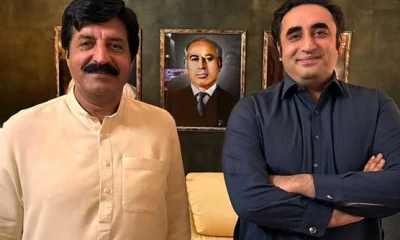
 Pakistan 2 days ago
Pakistan 2 days agoPPP’s Sardar Salim Haider Khan to take oath as Punjab governor tomorrow
-
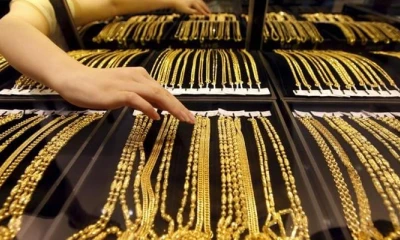
 Business 1 day ago
Business 1 day agoGold price drops by Rs800 per tola
-
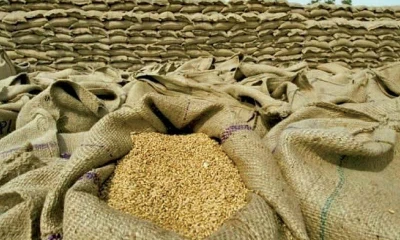
 Regional 1 day ago
Regional 1 day agoKP govt kicks off buying wheat from farmers
-
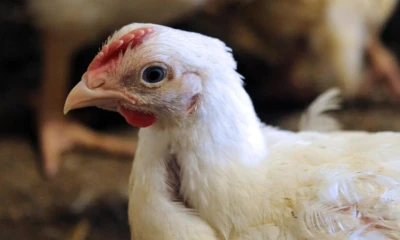
 Business 1 day ago
Business 1 day agoChicken prices go down in Lahore
-
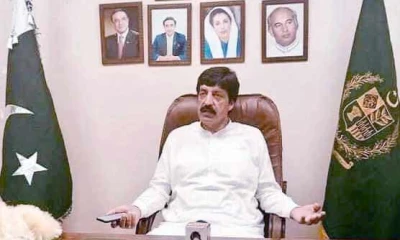
 Regional 1 day ago
Regional 1 day agoPunjab Nominee Governor Haider aims to bridge gap between PML-N, PPP
-
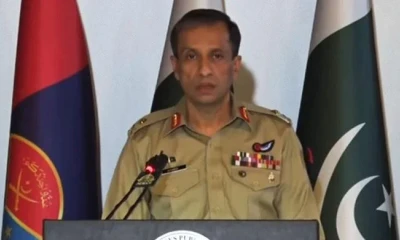
 Pakistan 2 days ago
Pakistan 2 days agoAfghan govt responsible for spike in terrorism incidents, May 9 perpetrators to face punitive action: DG ISPR
-
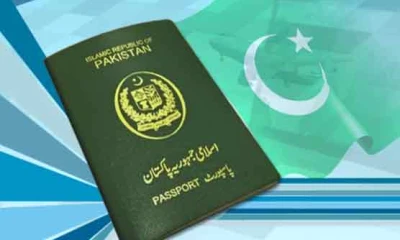
 Pakistan 1 day ago
Pakistan 1 day agoFees of fast-track passports increase again
-

 Business 2 days ago
Business 2 days agoGold prices in Pakistan fall slightly



